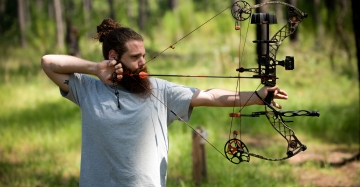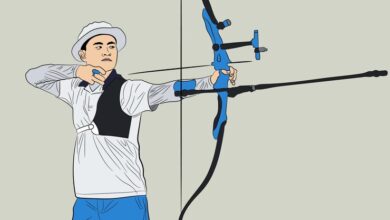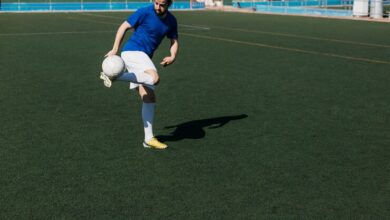Why does my heel hurt after pickleball?

Why does my heel hurt after pickleball? You’re not alone! Many pickleball players report discomfort or sharp pain in their heels after a game. Several factors, including incorrect footwear and overuse injuries, could be contributing to your heel discomfort. This condition is characterized by severe pain, especially in the heel.
It’s typically felt upon taking the first steps in the morning or after a long period of rest. By understanding the potential causes and implementing preventive measures, you can continue to enjoy the game of pickleball without being sidelined by heel pain.
What Causes Heel Pain From Pickleball?
Pickleball-related heel pain can result from various sources. Inflammation of the plantar fascia, a thick band of tissue that runs along the sole and connects the heel bone to the toes, is one frequent cause of the condition known as plantar fasciitis.
Pickleball includes a lot of speed and running which can strain the tissues of the plantar fascia and cause heel pain.Heel tendonitis, or inflammation of the tendon that joins the calf muscles to the heel bone, is another potential reason.
During gameplay, strong waves of speed and repetitive motions could increase this condition. Pickleball players may also experience heel pain due to heel spurs, which are bony growths that grow on the heel bone.
Long-term stress on the foot, such as frequent impact and significant strain during quick movements on the court, can cause these growths.
To lower their chance of experiencing heel pain, pickleball players can warm up before games, wear suitable shoes, and perform strengthening exercises.
What Are The Symptoms Of Post-Pickleball Heel pain?
Plantar fasciitis, sometimes known as post-pickleball heel difficulty, is a prevalent condition among participants in this well-liked sport.
This condition’s symptoms usually appear as a severe, sharp sensation at the bottom of the foot, especially in the area closest to the heel.
Post-pickleball heel pain sufferers may also experience increased discomfort during extended periods of a lack of activity such as when they wake up from a cold or early morning.
Playing pickleball is one physical activity that can make the pain worse. It may also become better after a little period of rest. It’s also possible for the affected area to expand and turn red.
In extreme circumstances, people could find it difficult to stand or move for extended periods of time without feeling severe pain.
If left untreated, post-pickleball heel pain can become a chronic issue that affects both athletic performance and everyday activities.
Therefore, prompt medical attention is recommended to alleviate symptoms and prevent further complications.
How Does Footwear Affect Heel Pain After Pickleball?
Footwear plays a key role in influencing heel pain after engaging in the sport of pickleball.
The type and quality of footwear directly impact the level of support, cushioning, and stability provided to the feet during the vigorous movements and quick changes of direction involved in pickleball.
Ill-fitting or unsupportive shoes can lead to increased stress on the heel, which can exacerbate existing heel pain or even trigger new discomfort.
Specifically, wearing shoes that lack proper arch support or shock absorption may result in the transmission of excessive forces to the heel, leading to inflammation and pain in the area.
On the other hand, choosing appropriate footwear designed for active sports like pickleball can greatly alleviate heel pain.
High-quality shoes specifically designed for court sports typically feature ample cushioning and good arch support, promoting proper foot alignment, reducing impact-related stress, and ultimately decreasing the risk of heel pain.
Therefore, ensuring the selection of appropriate footwear is essential for preventing or managing heel pain post-pickleball.
What Is Plantar Fasciitis?
The plantar fascia is a strong band of tissue that runs across the bottom of the foot, connecting the heel bone to the toes.
It can become inflamed and sensitive due to a foot condition known as plantar fasciitis, which causes severe heel pain, especially when taking morning steps or after long periods of inactivity.
Repetitive straining or excessive use of the plantar fascia can cause microscopic tears in the tissue, leading to inflammation and plantar fasciitis.
Risk factors for developing this condition include excessive running or walking, wearing improper footwear, having flat feet or high arches, being overweight, and having tight calf muscles.
Plantar fasciitis can often be effectively managed with simple treatment choices that can improve and restore everyday activities.
These include getting enough sleep, doing stretches, wearing orthotics or comfortable shoes, using ice packs, taking over-the-counter painkillers, and attending physical therapy.
In certain instances, advanced treatments such as surgery or steroid injections may be explored.
FAQS:
What is the most common cause of heel pain after pickleball?
The most common cause of foot pain is plantar fasciitis, which is inflammation of the ligament that runs along the bottom of the foot and supports the arch.
How can I prevent heel pain while playing pickleball?
It’s important to wear appropriate shoes, warm up before activity, use proper form, gradually increase intensity, and pay attention to your body’s signals.
How can I alleviate heel pain after playing pickleball?
Remember to rest, elevate your foot, apply ice, stretch, use pain relievers, and consider orthotic inserts or heel cups.
When should I seek medical attention for heel pain?
Seek medical attention if you experience persistent or severe pain, swelling, redness, or difficulty walking.
Can I continue playing pickleball with heel pain?
It is recommended to rest and avoid activities that aggravate the pain. For personalized advice, consult a healthcare professional.


